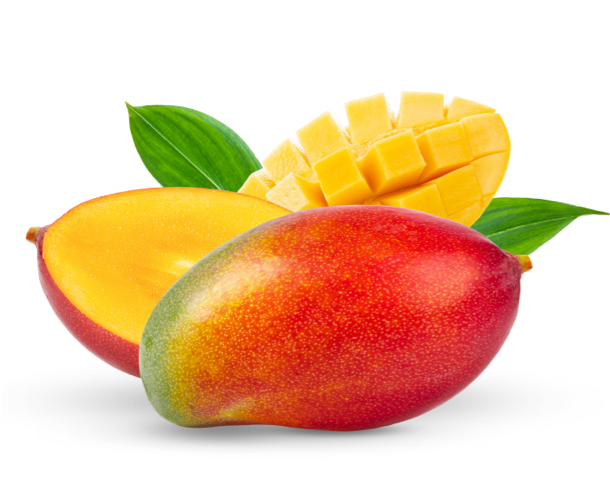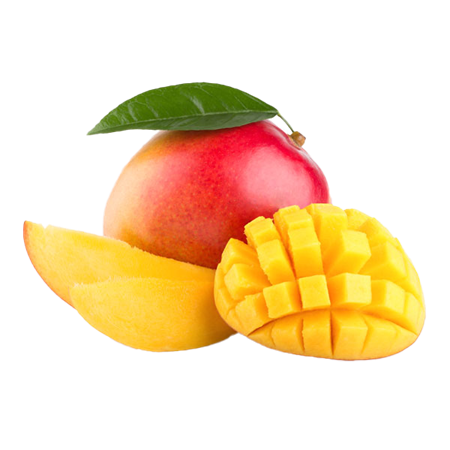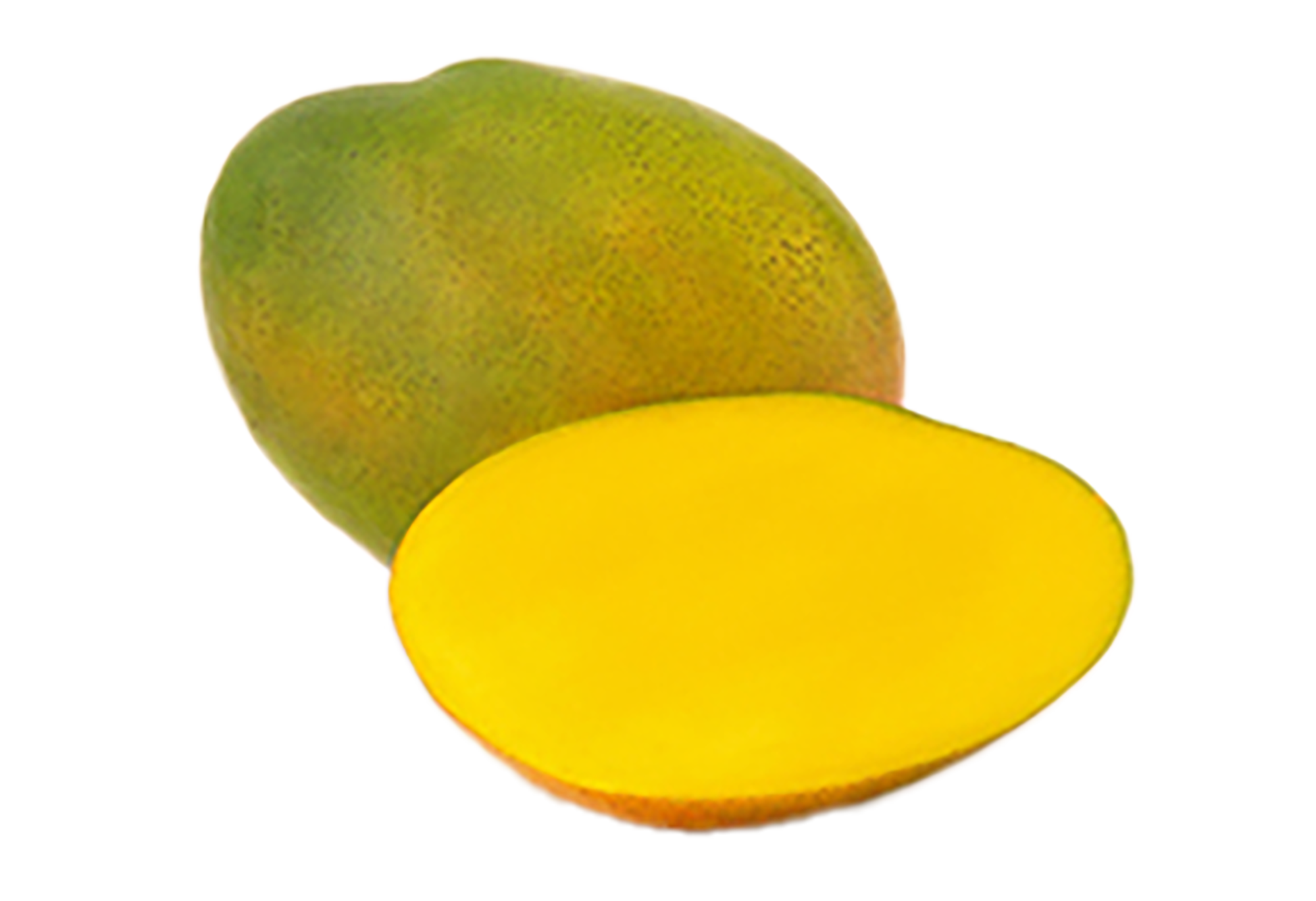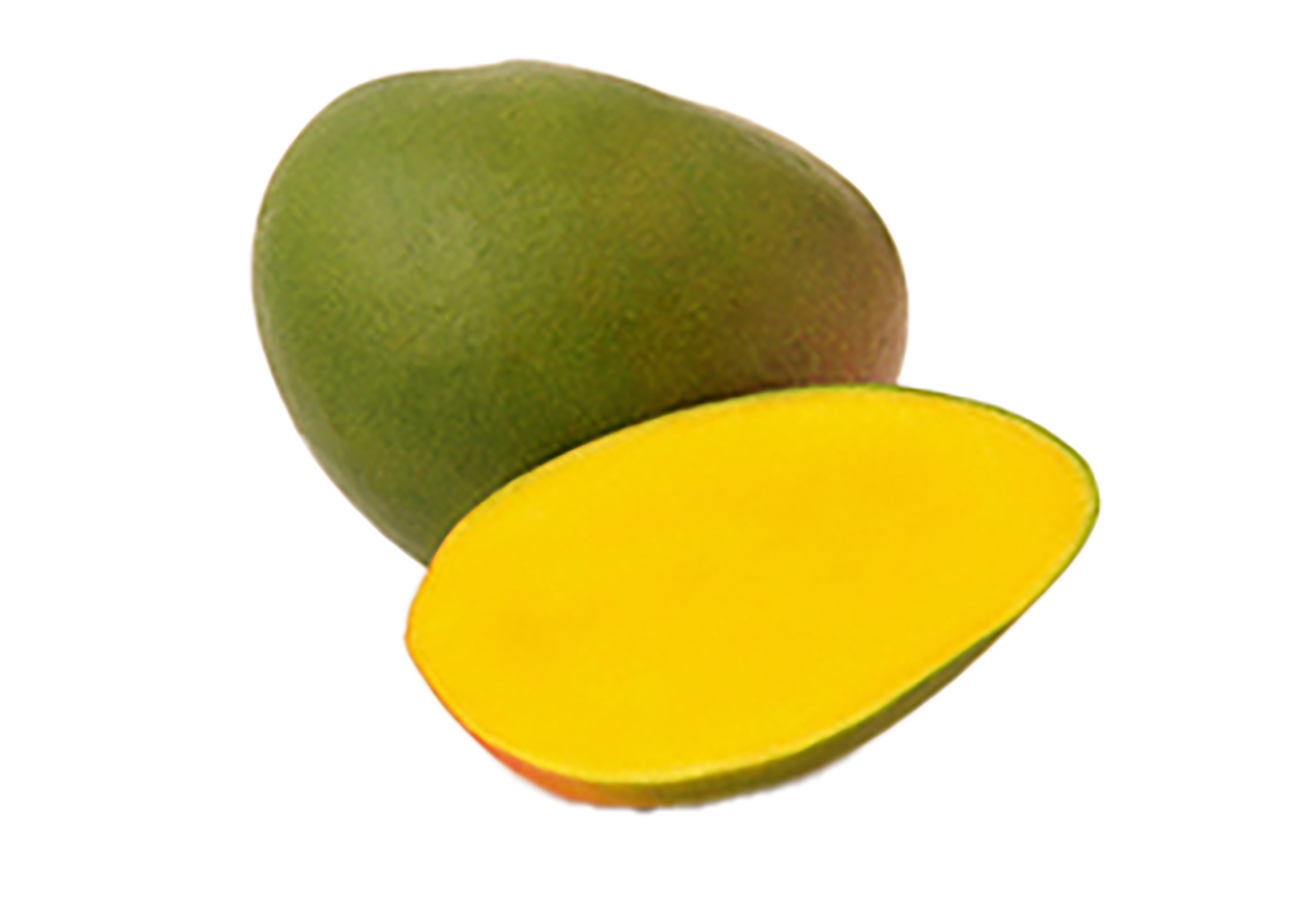Why is Mango so Special?
The mango is a tropical fruit native to South Asia, although it is now grown in many parts of the world. It is known for its sweet and juicy flesh, which varies in flavor from tart to very sweet, depending on the variety and ripeness. The fruit has a thick skin that can be green, yellow, orange, or red, while its interior contains a large seed in the center. It is rich in vitamins, especially vitamin C, and antioxidants, making it a healthy choice. Mango is consumed fresh, in juices, salads, desserts, and in various culinary preparations.
Calendar

Variedades
Osteen Mango
It can be considered an “indigenous variety” of southern Spain, as it is the only production area in the world. It has an average size of between 300 and 700 g, an oval shape, and a very characteristic purple-green color. Its flesh is mustard-colored, with a sweet flavor and a hint of acidity, and it has excellent quality due to the low presence of fibers. This variety is one of the first to ripen, typically from September to October under normal conditions.

The Osteen mango is a tropical mango variety known for its sweet flavor and juicy, smooth flesh. It is characterized by having a green-yellow skin with red hues when fully ripe. Its shape is slightly oval, and its size is medium to large. The Osteen mango has a smaller seed compared to other varieties, which leaves more edible pulp. It is highly valued for its quality and exceptional flavor, and is consumed both fresh and in juices, salads, and desserts. It is one of the most popular varieties in countries such as Mexico and Brazil.
Palmer Mango
It is easier to recognize, has a smaller size, a more elongated shape, and a distinctive dark red color. The average weight ranges between 300 and 600 g. The flesh is yellow, has very fine fibers, and is less acidic. Generally, you can expect it to ripen in October.

The Palmer mango is a variety of mango originating from Brazil, known for its sweet and slightly acidic flavor. It has an elongated shape and is medium to large in size. Its skin is green, turning yellow or red when fully ripe. The flesh of the Palmer mango is soft, fibrous, and juicy, with a smaller seed compared to other varieties, allowing for a greater yield of fruit. It is ideal for fresh consumption, in juices, salads, and desserts. Its resistance to transportation makes it very popular in international markets.
Keitt Mango
It is one of the largest mango varieties, with average weights ranging from 450g to 1000g. It is similar to the Osteen variety, but you can differentiate it by its rounder shape and greener skin. Its flesh is more yellowish and has very low fiber. Its flavor is slightly more acidic, and its sugar content is a bit lower. It is typically ready for harvest around October and November.

The Keitt mango is a variety of mango originating from Thailand but grown in various tropical regions around the world. It is characterized by its green skin, even when ripe, which distinguishes it from other varieties that typically turn yellow or red. Its flesh is bright yellow, juicy, and has a sweet and slightly acidic flavor. The seed is relatively large, but the flesh is abundant and has very little fiber. The Keitt mango is highly valued for its freshness and flavor, and is commonly consumed fresh, in juices, salads, or desserts. It is a variety that can be found available year-round in many international markets.
Kent Mango
The Kent mango proudly displays its resilient skin and reddish-yellow hue. Its oval shape and medium size, ranging from 400g to 800g, protect a flesh with a sweet flavor and a slightly acidic note. The fibers are almost imperceptible, ensuring a smooth texture in the mouth. It typically ripens between October and November.

The Kent mango is a variety of mango originating from Florida, United States, and is highly appreciated for its sweet and smooth flavor. Its skin is green with red or yellow hues when ripe. It has a rounded shape and is medium to large in size. The flesh of the Kent mango is juicy, with a smooth texture and little fiber, making it ideal for fresh consumption. Additionally, it has a small seed, allowing for more fruit to be enjoyed. It is one of the most popular varieties in international markets, especially for use in juices, desserts, and salads. The Kent mango is grown in various tropical regions and is highly valued for its quality and flavor.
Formats
We handle the fruit in different formats, packaging, and maturations, both packaged by us and in direct pallets from our suppliers.

